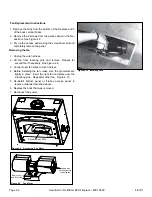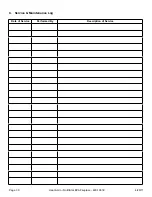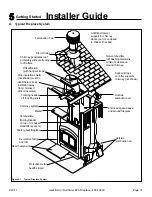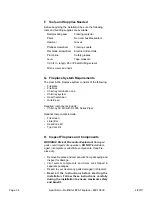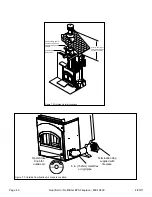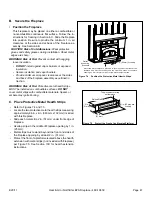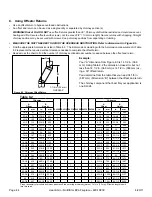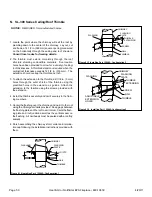
4/20/11
Heat & Glo • NorthStar EPA Fireplace • 480-1081E
Page 39
7
Installation of Fireplace
ImpORTANT! Outside air control considerations
Turn counter-clockwise to “OPEN” positions
Outside air knob must be in the “OPEN” position to oper-
ate fireplace properly.
May be closed when not in use to prevent cold air infiltra-
tion
CAUTION! Risk of Cuts/Abrasions. Wear protective
gloves and safety glasses during installation. Sheet metal
edges are sharp.
A. Install the Outside Air Kit
CAUTION! Risk of Fire or Asphyxiation! DO NOT draw outside combustion air from wall, floor or ceiling cavity, or
enclosed spaces such as an attic or garage.
•
DO NOT place outside air hood close to exhaust vents or chimneys. Fumes or odor could be drawn into the
room through the fireplace.
• Locate outside air inlet to prevent blockage from leaves, snow/ice, or other debris. Blockages could cause com-
bustion air starvation.
This fireplace will operate correctly only if adequate ven-
tilation is provided to allow proper draft to the fireplace
system. See Section 6.
An outside air kit must be used for combustion to mini-
mize the effects of negative pressure within the structure.
We recommend you utilize the shortest duct run to opti-
mize the performance of the outside air kit. The outside
air kit inlet should be positioned in a manner that will not
allow snow, leaves, etc. to block the inlet. In some instal-
lations the air duct may need to be run vertically. In such
an installation, a 3 ft (914 mm) height difference must be
maintained from the top of the uppermost chimney sec-
tion to the outside combustion air inlet. See Figure 7.2
on page 40.
See Figure 7.1 for proper placement of outside air inlet.
The outside air kit is installed on the right hand side of the
fireplace. See Figure 7.3 on page 40, for handle location/
operation.
1. Cut a 6 in. (152 mm) hole in outside wall to accommodate
air piping. See Figure 7.3 on page 40.
2. Use 6 in. (152 mm) metal flex or rigid piping
(not
supplied)
to directly connect outside air to fireplace
intake. Insulate the pipe to prevent frost condensation.
3. Use the supplied termination cap.
4. Seal between the wall and the pipe with silicone to
prevent moisture penetration and air leaks.
5. Seal between the termination cap and the house with
silicone to prevent air infiltration.
NOTE:
A control knob allows you control of the outside air
inlet. Use of outside air for combustion is required to
conserve heated air within the structure and to provide
make up air to keep the fireplace venting properly.
Outlet blocked by
snow, leaves, etc.
NO
Garage or
combustible
liquids storage
NO
Attic space
NO
Outlet placed
higher than 3 ft
below the
termination cap
NO
Use only duct materials
specified by manufacturer
Figure 7.1 Outside Combustion Air Placement


